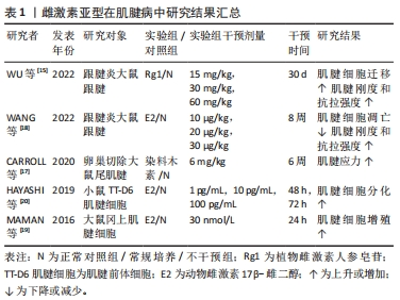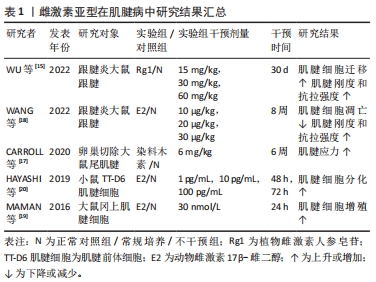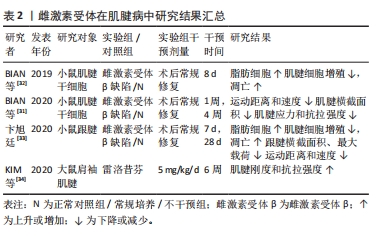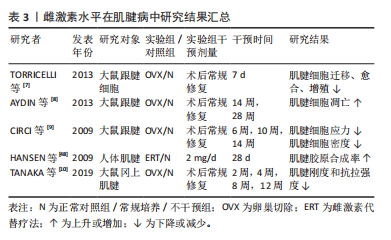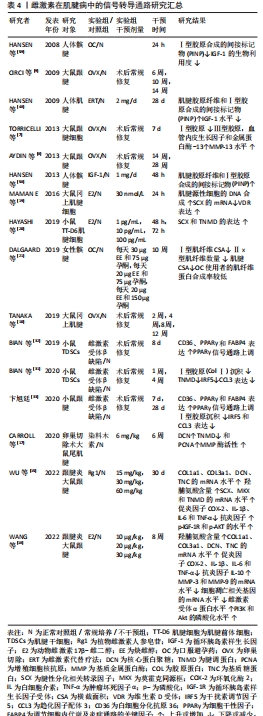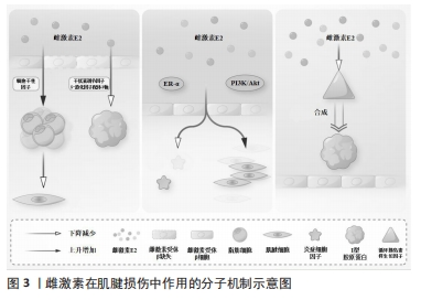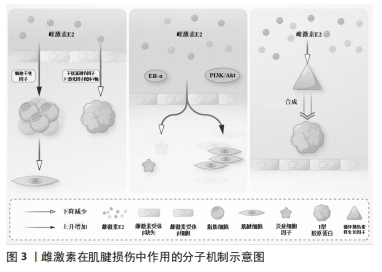Chinese Journal of Tissue Engineering Research ›› 2024, Vol. 28 ›› Issue (32): 5231-5237.doi: 10.12307/2024.501
Previous Articles Next Articles
Research progress in the effect of estrogen on tendinopathy
Sun Qingfeng1, Bai Shuo2, Zhang Zhen3, Shen Liang4, Gao Beiyao5, Ge Ruidong5
- 1Department of Rehabilitation Medicine, the Second Affiliated Hospital of Xi’an Jiaotong University, Xi’an 710004, Shaanxi Province, China; 2Beijing Chaoyang District Taiyanggong Community Health Service Center, Beijing 100028, China; 3Department of Rehabilitation Medicine, Beijing Da Wang Lu Emergency Hospital, Beijing 100122, China; 4Department of Rehabilitation Medicine, Chifeng City Hospital, Chifeng 024000, Inner Mongolia Autonomous Region, China; 5Department of Rehabilitation Medicine, China-Japan Friendship Hospital, Beijing 100029, China
